WAVANASTRON, John Melillo
There are only waves: slow and fast, puissant and weak: wandering, sounding, lighting, interfering, reverberating, coagulating, making, reveling, raveling…
There are only waves: slow and fast, puissant and weak: wandering, sounding, lighting, interfering, reverberating, coagulating, making, reveling, raveling…
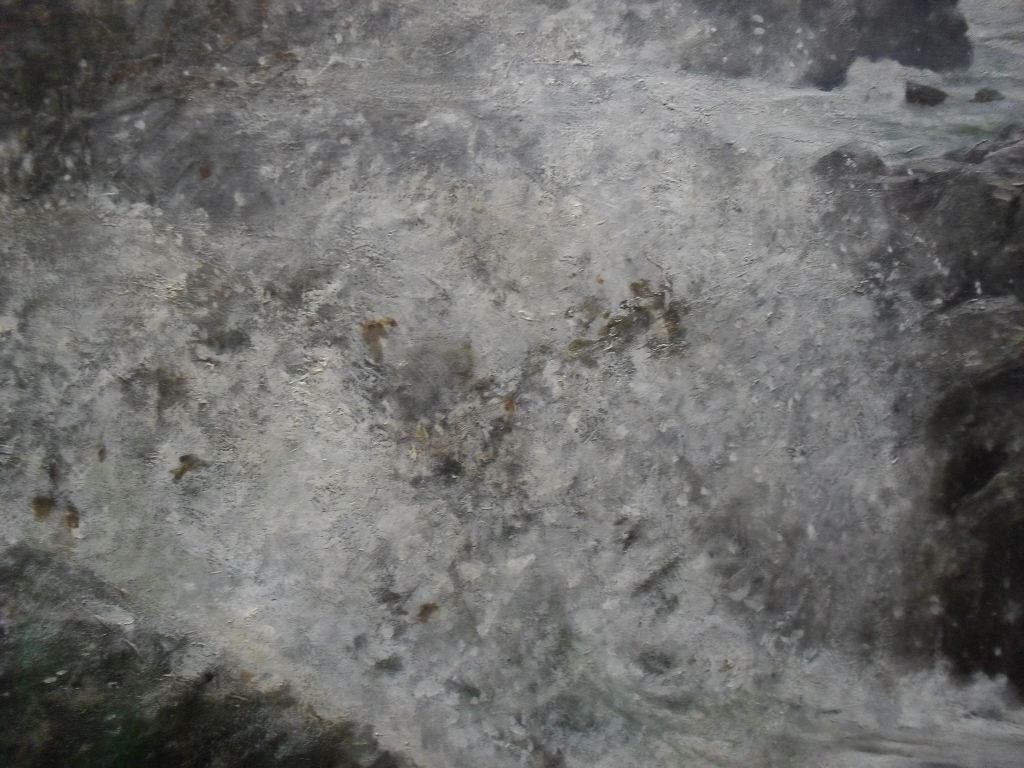
The surface of the sea is a complicated shape that makes it difficult to decide on wave height, length, or period.
(Bascom, Waves and Sea)
Map that sea’s surface into three and four dimensions, make all matter its material, wave upon wave in every direction. All at once and always. Make the already there there, the come-to-sense (apophainesthai) from the convolutions of things come together (the countering, containing congeries of volumes, with their spaces and densities, their reverberations, interruptions, and intersections).
We sense waves even in the midst of waves. We form forms that make marks and move . And, even more, these new waves—these energies, languages and periodicities—beat out and repeat themselves, over and over, slowly performing their entropic undulations.
Vnda sequax, …waue vpon waue: one waue following vpon anothers necke.
(J. Higgins, Junius Nomenclator)
And the waves like a forest
where the wind is weightless in the leaves
but moving.
(Pound, Canto XXVII.131)
Basic principle of Fourier: every motion is the sum of some other motions, a conglomeration of component frequencies. There are ways to track and transfer these motions that are not only mathematical, but sensed, sounded, said.
Sound is, of course, a sort of flow of power, a transfer of energy from place to place.
(Van Bergeijk, Waves and the Ear)
A poem is energy transferred from where the poet got it … , by way of the poem itself to, all the way over to, the reader.
(Olson, Projective Verse)
Not a synthesis, but an accumulation, a construction: tottering, whirling, twittering: held together and then fallen apart:
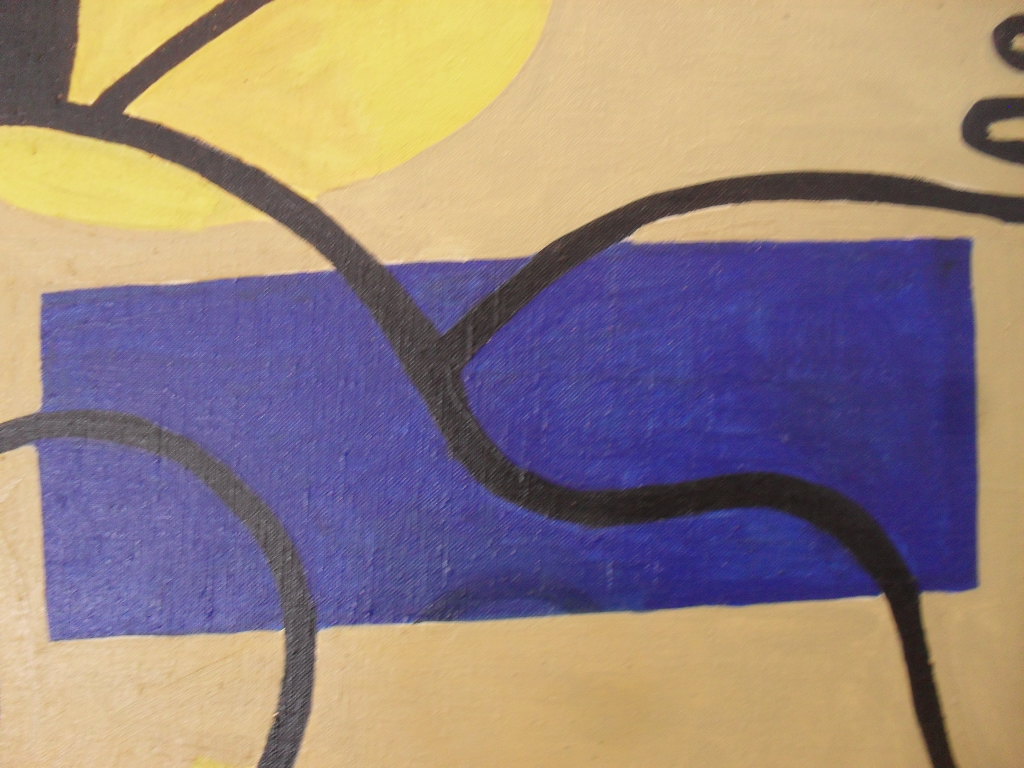
What ails thee, restless as the waves that roar,
And fling their foam against thy chalky shore?
(Cowper, “Expostulation”)
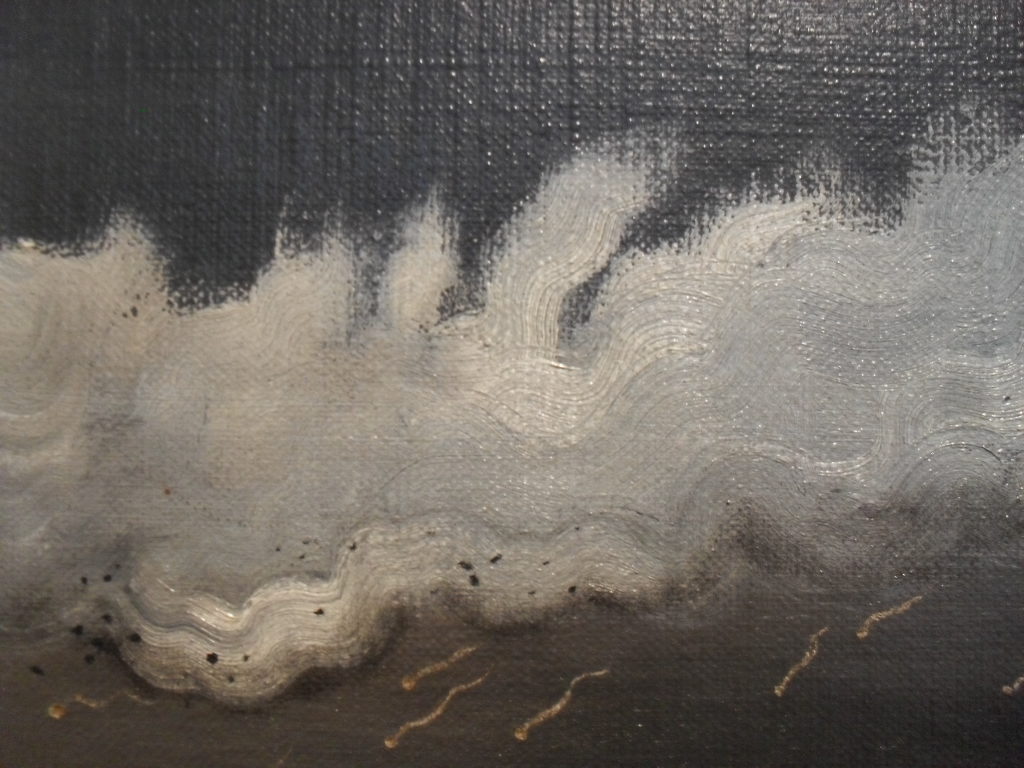
A restless roar that
con- / re-
sounds,
that we hear, that we make into language by parting, parsing, pairing: lexical, sporadic:
One evening, half asleep on a banquette in a bar, just for fun I tried to enumerate all the languages within earshot: music, conversations, the sounds of chairs, glasses, a whole stereophony … [T]his so-called “interior” speech was very like the noise of the square, like that amassing of minor voices coming to me from the outside: I myself was a public square, a sook; through me passed words, tiny syntagms, bits of formulae, and no sentence formed, as though that were the law of such a language. This speech, at once very cultural and very savage, was above all lexical, sporadic; it set up in me, through its apparent flow, a definitive discontinuity: this non-sentence was in no way something that could not have acceded to the sentence, that might have been before the sentence; it was: what is eternally, splendidly, outside the sentence.
(Barthes, The Pleasure of the Text)
Those periodicities outside the sentence, however, remain as their separate words: they compose a hearing that breaks up, re-sounds, re-combines:
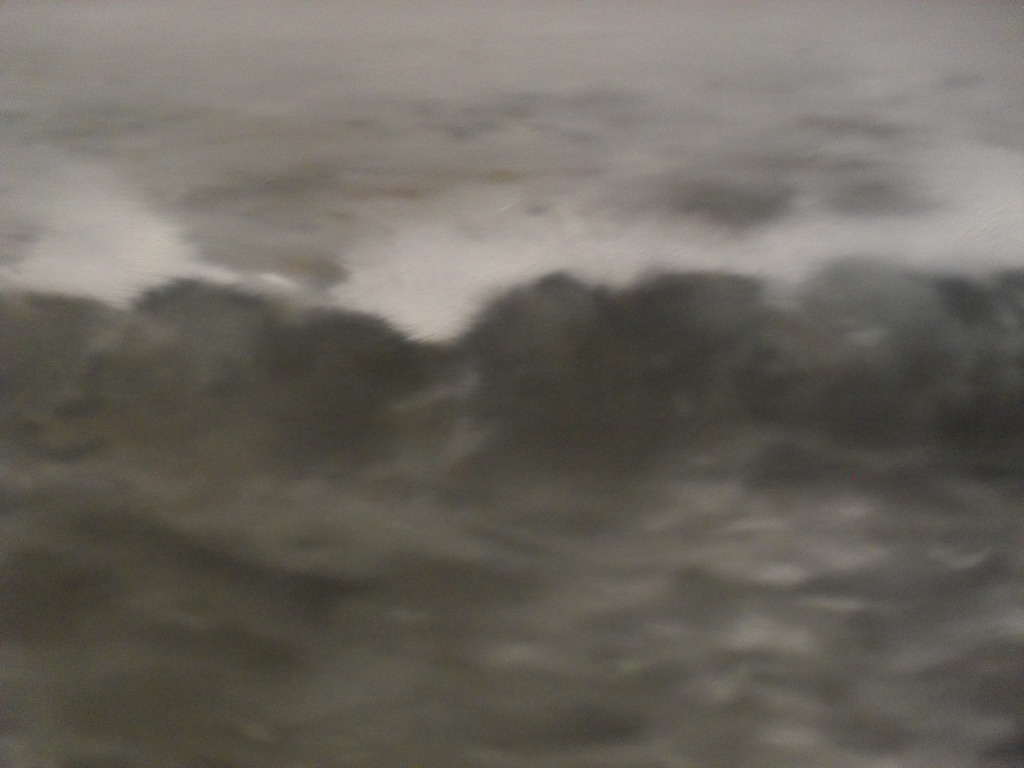
“home,” to the shore
bu-te pu-bu bu-nu-su
bayt. “house,”
to the
shore
pa-ba pa-’i-to “Phaistos”
pa, as in a for
Apple
tu tuppûh
and bird or ku is “town”:
kr-ku (Her headland, over
the sea-shore
(Olson, The Maximus Poems III.50)
Our language lessons shape this particular shape of listening. We soften and mold to the waves, as they plash against our ears from mother’s first high-pitched coo to yesterday’s surly hullo. Limitless, concrete energies crash against bodied listening. Let’s say our bodies are beaches: fragments shaped by waves, remains in movement, shored not against but as and from ruins. Wave-left. Slow-move.
Under the concrete, the beach!
A beach is an accumulation of rock fragments subject to movement by ordinary wave action.
(Bascom, Waves and Beaches)
We move by ordinary action, answer wave upon wave with fragments of tongue-ward energy, thrill at the different densities we produce:

(Coolidge, Smithsonian Depositions)
A periodic sonic pleasure shivers me and I have to say again: “Putting back the rusty disc to cover any strata that might be loose.” And again: “Putting back the rusty disc to cover any strata that might be loose.” Here are old trochaic and iambic flows; here, the sway of tongue backwards (“uh”) to tongue forwards (“ah” ), low to high, trough to crest; here, the shaken and sifted geological strata of consonantal clusters. We hear, here, our hearing miming the wave, the crash, the step, the heart-beat (all of these, of course, being excuses for meter).
Sets of orders of sounds in listening, language, singing: what do we sing in our listening?
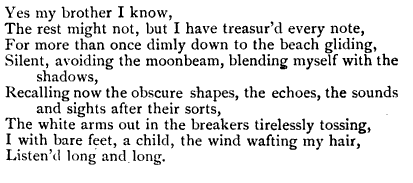

(Whitman, Out of the Cradle Endlessly Rocking)
Translate the notes, and the breakers soothe and soothe and soothe but also sing absent love, desire, voice calling in order to call itself, O, in the midst of those little layers and layers of water, sound, energies, bodies pushing upon the land.
Waves, then, are ways of hearing and being heard in the innumerable mumble of all things mouthing their being in sound: Hark! List! Listen! Listen! I am! I am! I am! Cuckoo! Cuckoo! Cuckoo! Hello! Hello! Hello!
Phatic static, welcoming with, in, within: you are here, with us, and you are neither echo nor an-echo, neither enclosed nor enshrouded but embraced, pushed. A social imaginary.1
So that:
The wave as social as tentacled, entendrilled, intended, entendre, understood:

The wave as social as rhythmic, lapping, acceding, enticing:
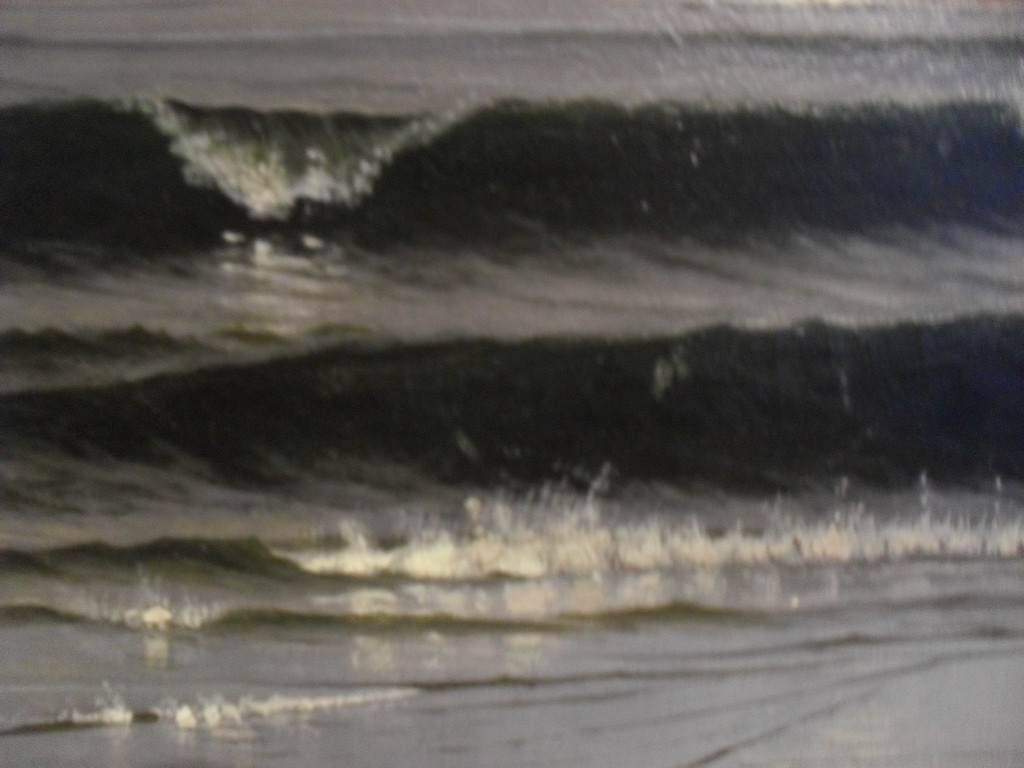
The wave as triumph, thronging, overthrowing, ever-flowing:
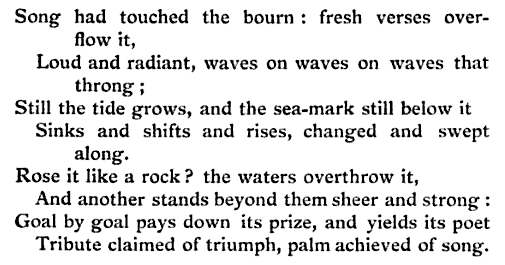
(Swinburne, The Statue of Victor Hugo)
But also waves as the calls of the violated, the ruined, the lost, the destroyed, the dead:
twit twit twit
jug jug jug jug jug jug
so rudely forc’d
Tereu
(Eliot, The Waste Land)
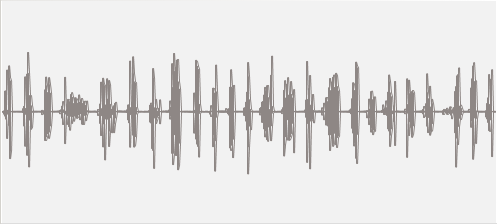
(Nightingale Song)
Here is a set in threes and twos, alliterative surfing:
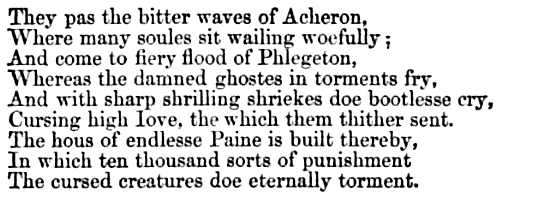
(Spenser, The Faerie Queene,I.v.33)
What do we hear in waves? Fiery floods of Phlege-Town, sharp shrill shrieks: tongue to palate voices, frictioning and fractioning, as they quiet down cursed creatures disquieting, disquisiting.
Is that enchanted moan only the swell
Of the long waves that roll in yonder bay?
(Tennyson, Maud)
Waves are the null-state of rhythm, the minimum of trace necessary to fabricate revenants—and ourselves—in the midst of noise. Waves are languages are waves, like sound sounds, like all “materials” and “materialities.” What’s the excess in those copulatives and comparisons?
A philosophy of forms can change all properties at once in the way most waves move in the way we study sequence as if Idealism is a force foreign to science or deep as being drowned.
(Susan Howe, “Either Ether,” p 122)
It is merely the form of the wave, and not the actual water that travels.
(T.H. Huxley, Physiography)
The wave is a form is a wave that marks, let’s us see, hear, taste, touch, know, matter:

Because:
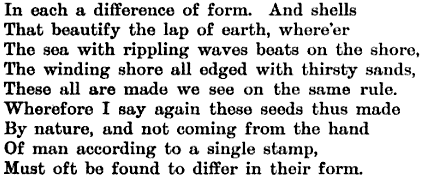
(Lucretius, De Rerum Natura, tr. R. Allison)
Every wave embodies that same difference, that differing difference always heard in distortions and cuts. Fundamental frequencies, sporadic lexemes, unda sequex, ancient syllables:
And the thought of its thought is the rage
of Ocean : apophainesthai
roared the great bone on to Norman’s
Woe: apophainesthai, as it blew
up a pool on Round Rock shoal;
apophainesthai it cracked as it broke
on Pavilion Beach; apophainesthai
it tore at Watch House point
(Olson, The Maximus Poems II.70)
Open, O wave, and speak.
1 Even the raven’s “Nevermore!” encases desire and welcomes the world in to us and us in the world: sounds sky-ing us into the cosmos, and ravanastronic trajectory.